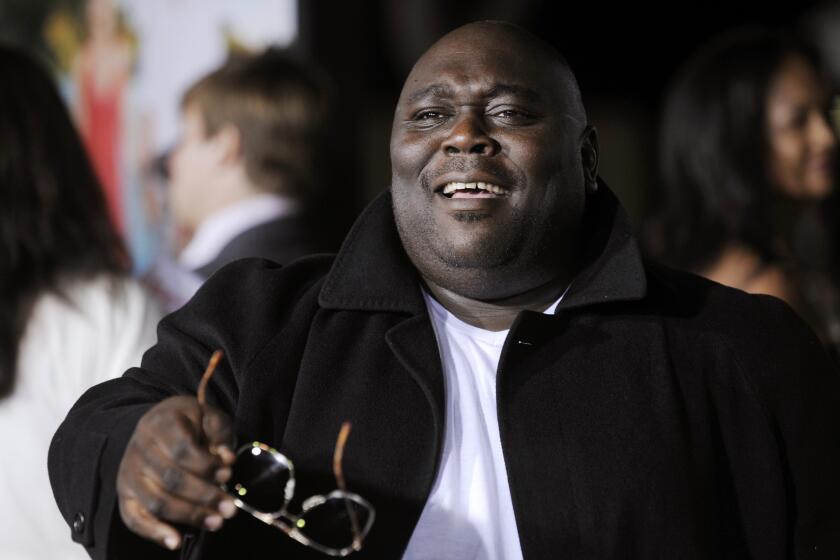Review: Music ensembles Hocket and Sakura bathe Monk Space in an acoustical glow
- Share via
If you monitor the New York arts press, you will quickly understand that Los Angeles is hot. The coast-to-coast current has changed course: young painters, writers and musicians are flocking here.
But the real indicator of a vibrant arts scene is not who’s arriving but who’s staying. In music, the most exciting performers and composers graduating from USC, CalArts, UCLA and Colburn are taking over alternative spaces in Eagle Rock, Highland Park, Koreatown and Chinatown. Hip, imaginative and technically dazzling local ensembles seem to spring up as wonderfully as wild flowers.
Tuesday night two such young ensembles — Hocket and Sakura — were at one such site, Monk Space. The gallery on the outskirts of Koreatown is home to the monthly Tuesdays@MonkSpace, curated by pianist Aron Kallay and now in its third season. The focus is on local young composers and performers, but not provincially. Monk Space is quickly becoming an essential place for anyone who wants to keep up.
SIGN UP for the free Essential Arts & Culture newsletter >>
Hocket is a piano duo; Sakura is an ensemble of five cellos. Both groups, which alternated throughout the program, are products of USC and are brilliant. Hocket’s Sarah Gibson and Thomas Kotcheff confined themselves to high-gloss white toy pianos. Their program was mainly Angeleno.
The members of Sakura were students of the cellist Ralph Kirshbaum, whose name translates from the German as cherry tree, which is “sakura” in Japanese.
Given the toy pianos, Hocket (a musical term for breaking up a melody between different voices or instruments) relied considerably on plucky, plunky whimsy. Sakura’s pieces — for one, three and four cellos — were more seriously European. The back-and-forth somehow worked. It was permissible to be serious and not to be serious. It was not permissible, however, not to make seriously difficult music seem easy and natural.
Pieces by Andy Akiho (“Karakurenai”), Aaron Holloway-Nahum (the fourth part of his 40-minute “Remember Me?”), Ryan Harper (“A 19”) and Hocket’s Kotcheff (“death, hocket, and roll”) did everything you possibly could do to every inch of the toy pianos. These are not exactly tonally nuanced instruments, so the emphasis was on percussion. Minimalist beats predominated, as did arresting sound effects achieved by violently hitting the keys or racing hands across the keys in massive glissandi.
Most surprising was just how much sound and variety can be produced by a couple of toys. When John Cage wrote his Suite for Toy Piano in 1948, he was the first to show that the instrument needn’t be a joke, but even he couldn’t have foreseen what he would unleash more than half a century later. He did, though, use toy pianos for provocation in his 1960 “Music for Amplified Toy Pianos,” which Hocket played Tuesday. The players create their own activities by manipulating a non-specific graphic score. Hocket, playing from iPads, employed toys and objects galore as noisemakers to create a crazy, ever-changing soundscape.
The cello pieces demonstrated their own impressive if very different range. The Finnish pianist Olli Mustonen’s “Triptych” for three cellos plays with Postmodern tropes sounds old and new at the same time, moody and exuberant also at the same time. Helmut Lachenmann’s solo, “Pression,” played with rapt percussive presence by Michael Kaufman, explores sounds the cello isn’t supposed to make, be they ethereal scraping of the strings or industrial level strumming and banging.
Yoshika Masuda made the intricacies and the sudden avant-garde changes of style in Krzysztof Penderecki’s classic “Capriccio per Siegfried Palm,” a piece once thought nearly unplayable, seem unusually good natured.
The concert ended with Russian composer Sofia Gubaidulina’s 1996 “Quaternion” for four cellos. It is a half-hour mystical work with a mathematical title that has something to do with complex numbers and four-dimensional space. The music has something to do with a generously lush four-dimensional cello sound. The superb Sakura had everything to do with embracing a small acoustically buoyant room in a luminous glow.
MORE:
Bill T. Jones tests the limits of his own comfort zone in ‘Story/Time’
Mezzo-soprano Abigail Fischer overcomes all challenges in ‘Song From the Uproar’
Isango Ensemble’s ‘uCarmen’ exerts overwhelming feminine power and vibrant musicality
More to Read
The biggest entertainment stories
Get our big stories about Hollywood, film, television, music, arts, culture and more right in your inbox as soon as they publish.
You may occasionally receive promotional content from the Los Angeles Times.











